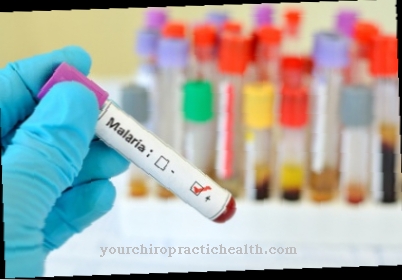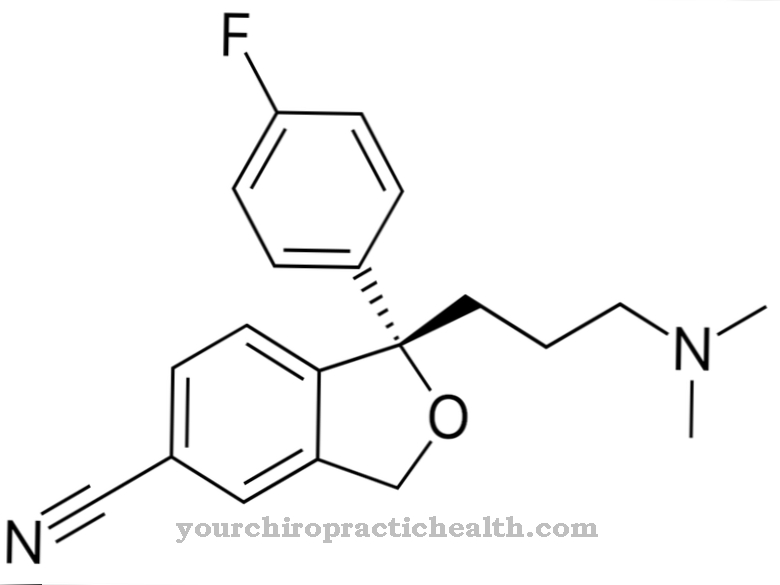Amitriptyline oxide, a drug belonging to the group of tricyclic antidepressants, is used to treat depression, anxiety and chronic sleep disorders. It is available as an active ingredient amitriptyline oxide 2-water under the names Equilibrin® and Amioxid-neuraxpharm®.
What is amitriptyline oxide?

Amitriptyline oxide is a mood-enhancing drug of the tricyclic antidepressants. It calms and relieves fears and is particularly prescribed for anxiety disorders, depression and chronic sleep disorders.
Amitriptyline oxide is also effective against certain chronic pain, such as neuropathic pain. The active ingredient is contained in the drugs Equilibrin® and Amioxid-neuraxpharm®. These are available from both brands as tablets of 30 mg, 60 mg, 90 mg and 120 mg each. The attending physician determines the strength and dose. Because of its numerous possible side effects, amitriptyline oxide should be prescribed particularly carefully and the patient examined regularly for undesirable effects.
Pharmacological effect
The mode of action of amitriptyline oxide is based on the inhibition of the reuptake of the neurotransmitters norepinephrine and serotonin in the presynaptic neuron. This blocks their absorption into the brain cells. This increases the concentration of the two messenger substances at the contact points with the cranial nerves. As a result, noradrenaline and serotonin are again available in sufficient quantities for signal transmission. This eliminates the cause of the symptoms of depression caused by the lack of norepinephrine and serotonin and the resulting inadequate signal transmission.
The use of amitriptyline oxide lifts mood and reduces anxiety. The patients sleep better again. A decrease in suicidal thoughts or the risk of suicide is to be expected. Nevertheless, it is important to note that amitriptyline oxide needs some time to develop its desired effect after it has been taken. Patients who are suicidal or otherwise self-harming should therefore continue to be monitored particularly carefully even after starting therapy with amitriptyline oxide.
There may even be a temporary increase in depression and suicidal intent at the start of treatment! The dose may also have to be adjusted. In principle, it should also be borne in mind that amitriptyline oxide can have a potentially lethal effect, so that suicidal patients should only ever be given the smallest possible amount of amitriptyline oxide.
Amitriptyline oxide is administered gradually and gradually at the start and end of treatment.
Medical application & use
The prescription of amitriptyline oxide is indicated for mental impairments that focus on depressive moods or anxiety states. Depression associated with anxiety and excitement in particular is a typical reason for therapy with amitriptyline oxide.
The drug has a calming effect and relieves nervousness so that patients with chronic sleep disorders sleep better again. The best time of day to take amitriptyline oxide is therefore towards evening. Amitriptyline oxide must not be taken or discontinued suddenly, but must be tapered in or tapered off at the start and end of therapy.
The patient must be monitored closely at the start of treatment. In particular, people with suicidal thoughts and tendencies to harm themselves should be observed closely. Amitriptyline oxide takes a while to produce the desired effect and can even temporarily increase depression or suicidal intentions at the start of treatment.
Therefore, people affected by this should only receive amitriptyline oxide in the smallest possible amount, as the agent can be fatal in sufficiently high amounts.The patient is advised to seek medical contact immediately if he has thoughts of suicide and, if necessary, to go to a hospital.
You can find your medication here
➔ Medicines against depressive moods & to lighten the moodRisks & side effects
A variety of side effects can occur during therapy with amitriptyline oxide. Very often it happens:
- inner restlessness and lack of concentration
- Ataxia
- Taste disorders
- Mydriasis
- Micturition disorders
- Hyponatremia
- Increased thirst
- skin rash
- impotence
- Loss of libido
- delirious symptoms in the elderly
The following are also common side effects:
- Tiredness, drowsiness
- a headache
- Dizziness, accommodation disorders, tremor
- aggressions
- Speech disorders
- Dry mouth or nasal congestion
- sweat
- Tachycardia, cardiac arrhythmias
- Hypotension
- orthostatic dysregulation
- Constipation
- temporary increase in liver enzyme activity
- Weight gain
Other extremely diverse side effects can occur, albeit less often, so that regular visits to the doctor are recommended.
Amitriptyline oxide is contraindicated in people with enlarged prostate with bladder emptying disorder, sagging bowel, glaucoma, cardiac insufficiency, cardiac arrhythmias, liver dysfunction and elderly patients with organic brain syndrome.
Pregnant and breastfeeding women are also excluded from amitriptyline oxide therapy. Children and adolescents under 16 years of age are subject to therapy.

















.jpg)







.jpg)


